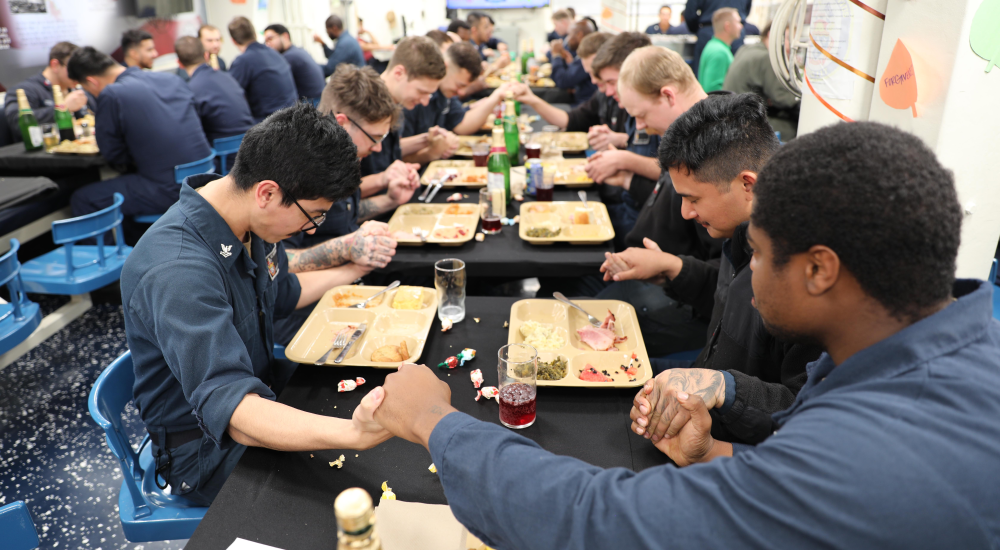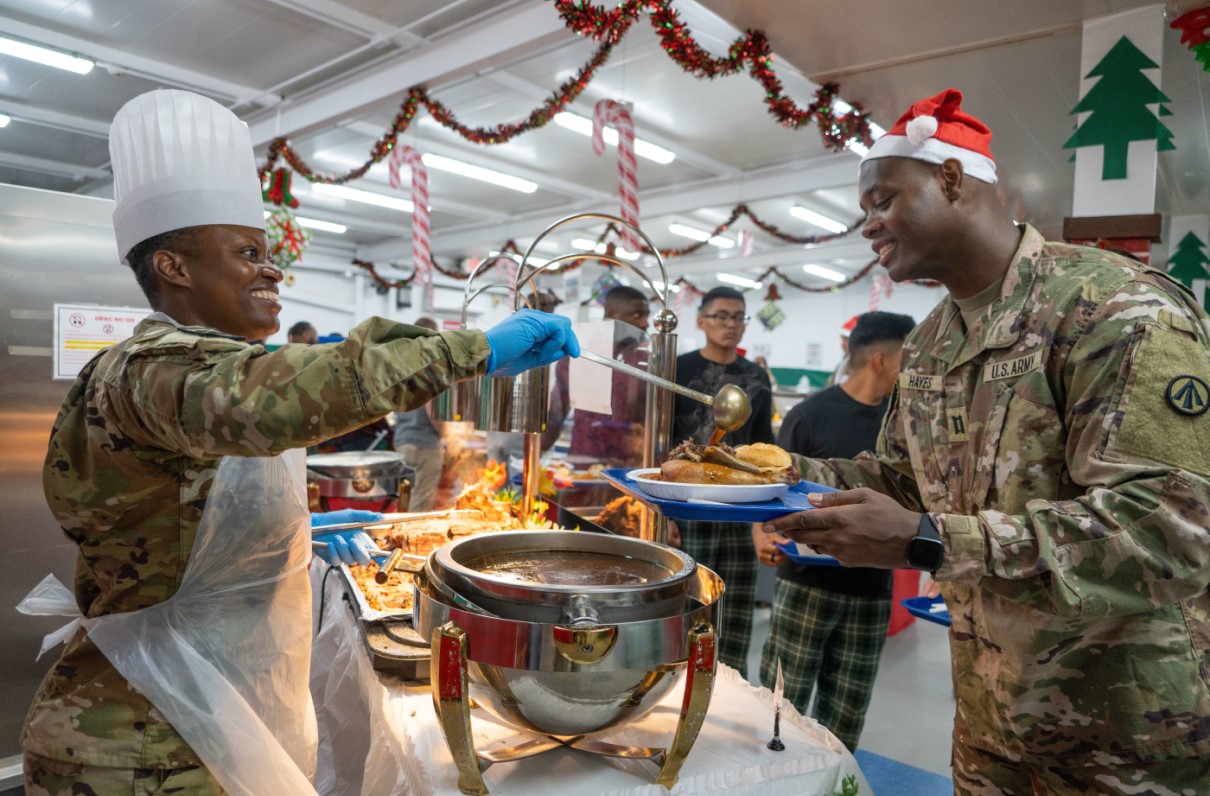The festive season is upon us, bringing families and friends together to celebrate traditions old and new.
During this time, please keep our deployed servicemembers in your thoughts and prayers. Their absence from their families during holidays leaves a void and generates many difficult questions, especially for young children. Questions like, “Where are they and when will they be home?”
Those of us who have lived this life know these questions all too well. And this holiday season, large unit deployments and overall operational tempo are as high as during the “surge” in Iraq and Afghanistan. It is a lot of stress on families and servicemembers.
[TAKE ACTION: Urge Your Legislators to Improve the Quality of Life for Our Servicemembers]
If you are not familiar with these challenges or the magnitude of emotions, watch these videos. Have some tissues handy.
So, how many are deployed, and where? Here is a look at some of the hot regions:
- Eastern Europe: Our nation and allies have a forward presence in Bulgaria, Estonia, Hungary, Latvia, Lithuania, Poland, Romania, and Slovakia, per a Dec. 8 report from NATO, with more forces underway in the Mediterranean and Baltic seas. More than 20,000 U.S. servicemembers deployed to Eastern Europe in response to Russia’s invasion of Ukraine, according to DoD, and the USO acknowledged the troop strength grew to 40,000 one year after the invasion. The war in Ukraine remains dangerous and tense with no end in sight.
- Middle East: Axios has a thorough review of the locations where we have a combined 45,000 uniformed servicemembers and contractors: Kuwait, Bahrain, Qatar, the United Arab Emirates, Jordan, Saudi Arabia, Iraq, Oman, and Syria. A few senators recently introduced legislation that would pull the 900 U.S. troops out of Syria, largely over concerns about continued attacks. The bill was brought before the Senate this month and was defeated 84-13, sending a strong message in support of the deployments.
- Carrier Strike Groups (CSGs): There are two CSGs deployed to the Middle East, representing an enormous amount of combat power (and a lot of sailors and Marines). CSG-12, with its flagship carrier USS Gerald R. Ford (CVN-78), was extended in the region, and CSG-2, led by USS Dwight D. Eisenhower (CVN-69), entered the Persian Gulf a few days after Thanksgiving.
- Rotational Deployments: We continue rotational deployments of an Army brigade combat team to South Korea to deter conflict from the north, and our National Guard continues to deploy servicemembers to Kosovo, the Horn of Africa, and Egypt for peacekeeping duty in the Sinai.

Sailors aboard USS Paul Ignatius (DDG-117) give thanks after their Thanksgiving dinner on Nov. 23. The Arleigh Burke-class guided-missile destroyer is part of the Gerald R. Ford Carrier Strike Group. (Photo by Mass Communication Specialist 1st Class Zac Shea/Navy)
While our servicemembers deserve our support downrange, Congress still has some unfinished business at home – primarily, to pass legislation that fully funds the government. At this writing, all 12 appropriations are being covered by two continuing resolutions through mid-January and early February.
When lawmakers return from their break, they will need a renewed commitment to pass legislation that fully funds the government. MOAA will continue to seek answers from the Hill and keep you updated. In the meantime, we need our members to engage with their lawmakers, asking them to resist more continuing resolutions and fund the authorizations already approved, along with the authorizations coming early next year.
[TAKE ACTION: Ask Your Lawmakers to Avoid a Government Shutdown and Finish the Appropriations Process]
Make a difference: MOAA counts on our members to deliver one powerful voice to every state and district. To do this, we need you to register for our Legislative Action Center, a move which will help build the bench of advocates for current challenges and others to come. Consider recruiting your network of friends and family to join the action center (MOAA membership is not required), and ask your House members and senators for the leadership to fix the costly problem of not passing appropriations on time.
You can also ask members of your network to contact their representatives at 866-272-MOAA (6622), MOAA’s toll-free line to the U.S. Capitol switchboard. Ask to speak with the military legislative assistant (MLA) in the office who is focused on legislation for our community. If that staffer is not available, consider scheduling a follow-up call to make a personal connection with these influential MLAs.
Grassroots advocacy works! As we approach a contentious election year, don’t miss the chance to engage your House member and both senators. They will not know what our uniformed community needs if you don’t ask.
MOAA Looks Out For You
MOAA is committed to protecting the rights of servicemembers and their families. Lend your voice and support these efforts today. Because the larger our voice is, the greater our impact will be.

